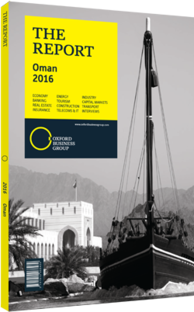Banking
The Company
The publicly listed Ahlibank is engaged in commercial banking activities in Oman through a network of 19 branches. It was formed in November 2007 when Ahli United Bank (AUB) acquired a 35% stake in Alliance Housing Bank, a specialised mortgage finance provider. AUB acquired the stake by way of full subscription of Alliance Housing Bank’s capital increase for a total capital consideration of OR50.9m ($131.8m). AUB also signed an agreement for management control for five years. Since the acquisition, Ahlibank has diversified its business portfolio to become a fully fledged commercial bank, including retail finance, corporate finance and trade finance.
As of December 2014 personal loans accounted for 42% of the bank’s total, construction for 16%, wholesale for 12% and manufacturing for 7%. Ahlibank has a higher cost of funds than other banks because of its high concentration of time deposits, which account for 71% of total deposits, compared to low cost demand and saving deposits, which account for 29%. However, Ahlibank is one of Oman’s most efficiently managed banks, with high revenues being generated from a small number of branches. This resulted in it having a cost-to-income ratio of 34% in 2014, which is the lowest among banks in the sultanate.
Performance
In 2014 Ahlibank saw another year of good financial performance. Net profit for 2014 rose by 9% to OR25.1m ($65m), up from OR23m ($59.5m) in 2013. Total assets stood at OR1.65bn ($4.3bn), up from OR1.34bn ($3.5bn), an increase of 23%. The bank’s loans and advances portfolio rose by 26% in 2014 to OR1.39bn ($3.6bn), up from OR1.11bn ($2.9bn). The loan book continued to be of a very high quality, as reflected in its non-performing loan ratio of 0.97% in 2014.
In line with the bank’s strategy to build a stable lower-cost deposit base, customers’ deposits grew by 13% to OR1.08bn ($2.8bn) in 2014, up from OR955m ($2.5bn). Operating expenses totalled OR17.7m ($45.8m) in 2014, up by 12% on 2013.
For the first nine months of 2015, Ahlibank’s net profit grew by 14% to OR21.8m ($56.4m), compared to OR19.1m ($49.4m) during the same period in 2014. Total assets grew by 21% to OR1.92bn ($5bn), and net loans and advances were up by 13% at OR1.51m ($3.9m).
Islamic banking was launched by Ahlibank in 2013 under the name Al Hilal Islamic Bank by opening seven branches at once. This proved to be a successful strategy, as Ahlibank built a fast-growing and profitable business from scratch. Net income from Islamic financing grew by 69% to OR5.2m ($13.5m) in the first nine months of 2015, up from OR3.1m ($8m) in the same period in 2014.
For the past three years Ahlibank has maintained a total dividend of 10% of capital, while the composition of the total has varied between cash and stock dividends. In March 2015 Ahlibank paid 10% on all stock dividends as the bank preserved cash in order to meet capital adequacy requirements, which stood at 13.96% at the end of 2014.
Ahlibank’s stock posted a total return of 40% in 2014, significantly outperforming the MSM30 Index’s total return of -4%. For the first nine months of 2015 Ahlibank posted a total return of -10%, versus the MSM30 Index’s return of -5%.
In November 2015 Moody’s changed its outlook for the Omani banking system from stable to negative. The potential mild economic slowdown in Oman resulting from low oil prices is expected to translate into weaker credit growth for banks, as well as moderate pressure on funding, asset quality and profitability. However, Ahlibank’s strong operating metrics, low non-performing loans ratio and sufficient capital adequacy mean it is well positioned to weather a period of low oil prices.
You have reached the limit of premium articles you can view for free.
Choose from the options below to purchase print or digital editions of our Reports. You can also purchase a website subscription giving you unlimited access to all of our Reports online for 12 months.
If you have already purchased this Report or have a website subscription, please login to continue.

